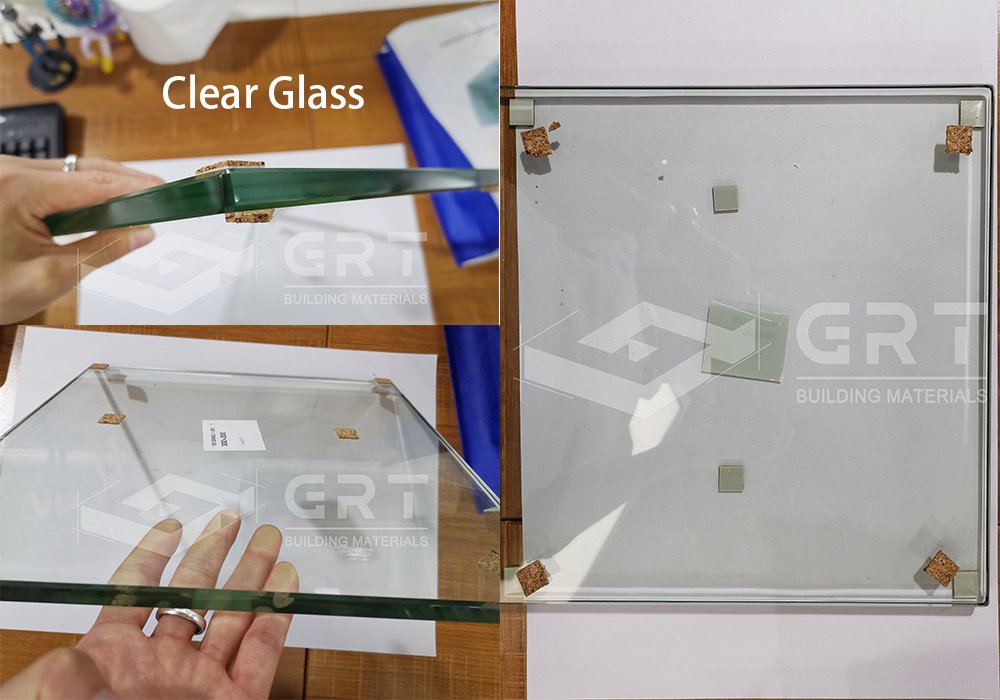When it comes to buying glass railings, showers, or glass partitions, customers are often torn between two choices: should they go for clear glass or ultra-clear glass? What’s the difference?
This is an easy decision when you know the actual difference between clear glass and ultra-clear glass. Once you do see that difference, you are better equipped to make the right choice for your glass railing, shower door, or glass partition.
Visually, there is a slight detail that shows when you have “regular” clear glass compared with ultra-clear glass, which goes under various other names around the internet.
We prefer to simply call it ultra-clear glass and here is how you differentiate it from clear glass.
Color
The difference between clear glass and ultra-clear glass shows when you look at the edges of your piece. Clear glass has a bit of a green hue to its finish, whereas ultra-clear glass has a completely neutral finish. It contains approximately one-quarter of the iron content of standard clear float glass, providing an ultra-clear glass that is crystal clear in appearance.
The explanation for this tint difference is the following: Ultra-clear glass is made of low amounts of iron, compared to standard clear glass. For this reason, ultra-clear glass is also called low-iron glass. It is made of 0.01 % ferric oxide – in other words, it is not composed of much iron at all. In comparison, clear glass can contain up to 4 or 5 times that material quantity due to the natural levels of iron present in sand, one of the main glass “ingredients”.
The greater light transmission capacity of high-clarity glass will show indoors – on a shower glass door, a glass shelf, or a glass railing installed on your living room retainer wall, for example.
Thus, ultra-clear glass is ideal in decorative and furniture applications, showcases, showers, or shop fronts – any situation where featured colors or displays at close range need to be enhanced.
Spontaneous Breakage
As we know, the Nis inside glass will cause glass spontaneous breakage. The glass contains nickel sulfide crystals. NiS (nickel sulfide) has a phase transition process at 379 ° C. When the high-temperature α-NiS crystal system is changed to the low-temperature β-NiS crystal system, the volume expands by 2% to 4%. And the surface is rough. If these impurities are in the tensile stress zone of the tempered glass, volume expansion may cause spontaneous bursting.
Glass deep processing enterprises will have a heat soak test after the tempering process, effectively reducing the probability of self-explosion.
The Nickle mainly exist in the glass raw materials, and the float glass production lines, low iron glass raw materials source are quite different from the normal clear glass with the much stricter requirement, the raw materials are purer, which will decrease the tempered glass spontaneous breakage ratio, which can even compete with the heat soaked tempered glass breakage ratio, 3‰ is believed to be a reasonable rate.
Should I buy ultra-clear glass for my projects?
The difference in iron levels does not diminish the quality of clear glass in any way – in some cases, in fact, it is not particularly useful to pay more to get an ultra-clear glass.
For instance, you would not significantly improve your view on your pool or on the lake if you paid a high dollar to get low-iron glass for your deck railing. Reduced iron rates do improve light transmission through glass panels, but not enough to justify the substantial extra in outdoor application.
If your glass is installed in white or very pale surroundings (i.e shower enclosures with white ceramic walls, glass cover on a white marble table, etc.), only then you would want to consider getting ultra-clear glass; otherwise, it is usually not worth paying the extra cost.
Clear glass still is the most prevalent type of glass and the lowest cost solution. Other than the tint, it mostly carries the same likeable features as ultra-clear glass, such as high workability, chemical stability, resistance to corrosion, etc.
Clear glass can also be toughened through the tempering process, thus becoming five to 10 times more scratch and heat resistant.
Here is the comparison between these two glass types



I hope this post can help you make a more suitable decision for your project.

